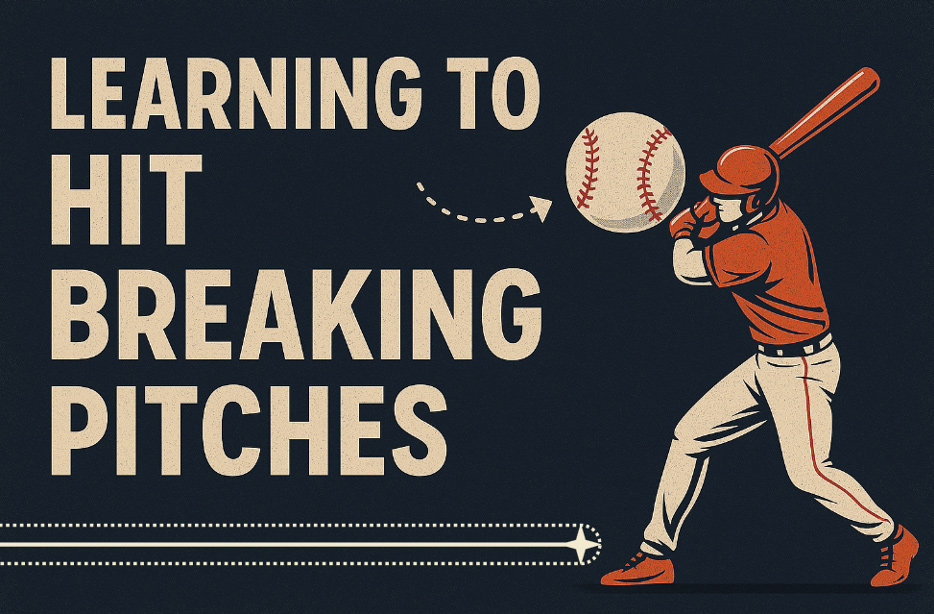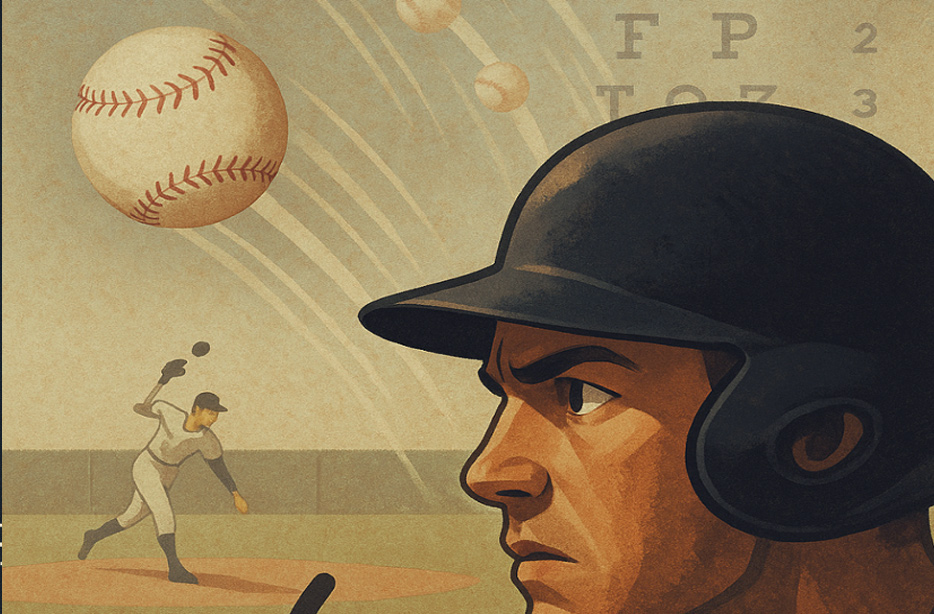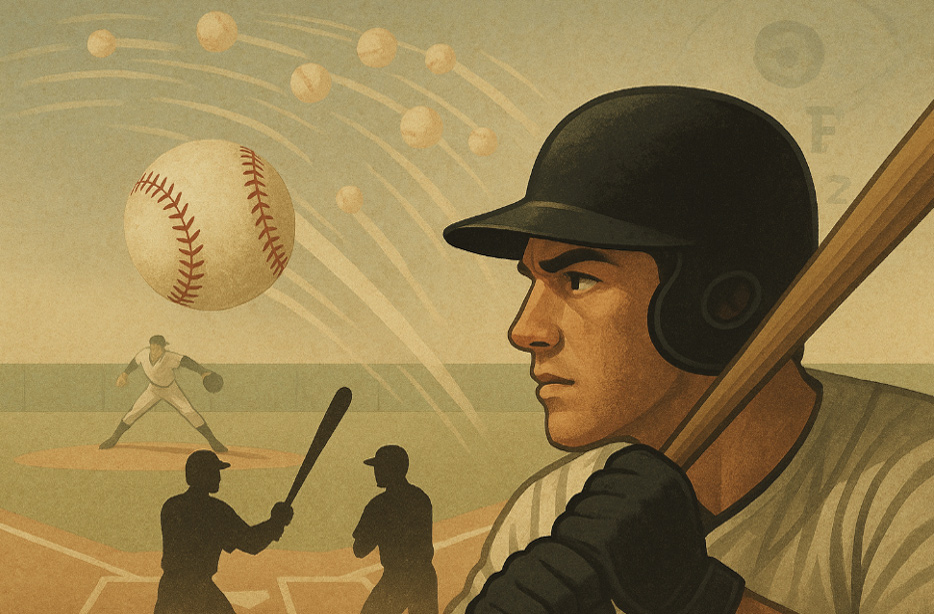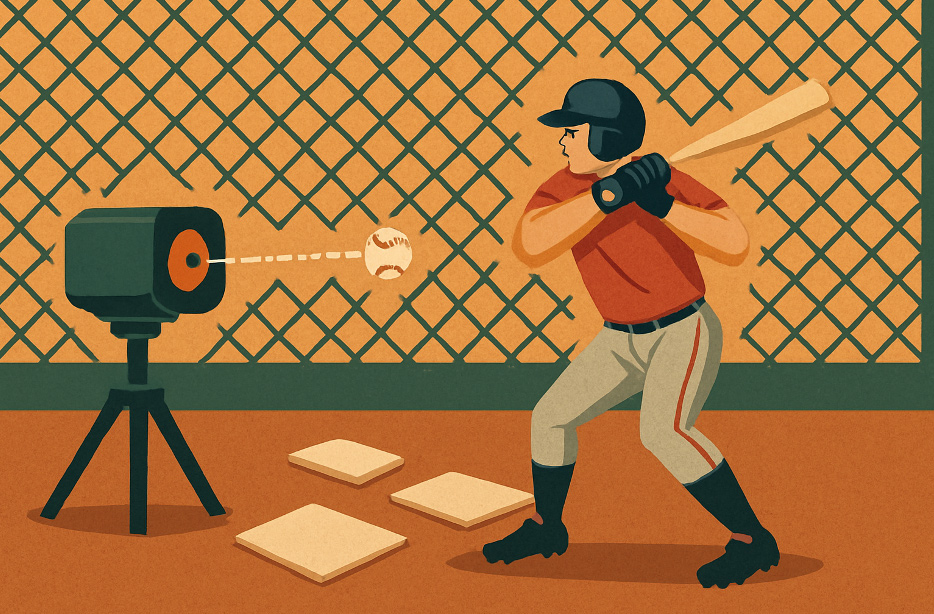
It’s a given that very few players hit quality breaking pitches well and it’s also a fact that hitters see nothing but fastballs in practice and games 99.9% of the time right from the beginning. When they are finally introduced to breaking pitches at the middle school level most of them are outside of the strike zone. It isn’t until high school or even college before a hitter must learn to hit quality curves and sliders!
The dilemma then becomes how do I create a crash course on hitting breaking pitches so I can be successful at the next level? The answer isn’t simple, and the solution isn’t easy either. Let’s take a look at what it is going to take to become a better breaking ball hitter.

Step 1: Recognition
The first key to hitting curveballs is recognizing them as soon as possible. Having built a significant library of fastballs from both lefties and righties over many years of practices and games it is now important that the player develop his library of breaking ball pitches of all shapes and sizes as quickly as possible.
Get a comprehensive eye examination before every season. MLB players have above average visual skills.
See as many breaking pitches as possible. In practice, never have a curveball thrown that isn’t recognized and tracked by at least 3 hitters! Use the Muhl Bullpen click bats with at least two guys behind the BP hitter swinging at pitches. Have a LHH and a RHH standing in the box during every bullpen. They get to swing at every pitch. At the same time pitchers learn to pitch in and they add depth to their breaking pitches.
Have BP pitchers or machines always off center either a lot or a little to mimic ball movement. Use bounces to create curveballs if the feeder cannot throw them.

Step 2: Approach
We use the old Gary Ward Oklahoma State rule of don’t swing at curveballs until you have two strikes. Once an athlete shows you he never chases one with less than two strikes he has actually learned to recognize them so you can always give him a green light.
Once green-lighted on breaking pitches the rule becomes swing only at breaking balls that look like they will be near the letters and on the inside 2/3 of the plate. Try to launch the ball up and to the pull side.
With two strikes in modern day baseball, we crowd the plate and look for a pitch 10 mph slower than the normal fastball on the outside part of the plate. In other words, we are anticipating a slider or sweeper and adjusting in.
 Step 3: Mechanics
Step 3: Mechanics
Hitting breaking pitches requires bat speed and two mechanical principles.
The first key to hitting the breaking pitch is having exceptional bat speed so the hitter doesn’t have to cheat and open up to hit the fastball.
Adjustability is the second key and that means having a float or front knee cushion movement at front heel strike if the ball isn’t there yet. If a hitter locks up his front leg early to hit the fastball he will not be able to hit the slower pitches.
I think it’s important to replace the old adage of “keep your hands back” to hit the off-speed pitches with “keep your front shoulder closed.” One can keep his hands back but if he opens his front shoulder he bars up and can’t hit a fastball. Keeping the front shoulder closed keeps the hands back, but keeping the hands back while opening the shoulder guarantees a long, slow swing.
 Step 4: Training
Step 4: Training
In winter hitting off the pitching machines we hit almost exclusively sliders. Hit them from LHP and RHP. Rather than moving the pitching machine, turn the plate toward either the pitcher, the shortstop, or the second baseman. We also use at least 3 plates in line to work from the bottom to the top of the zone. Having done this for many years we have gotten one result we expected and one we did not. After hitting 700 sliders per week all winter our hitters hit the breaking pitches a lot better but what we didn’t expect is that they hit the fastball harder and farther because they learned to wait and be quick. They learned to stay closed which kept their hands back.
Want to know more about how to hit and pitch like a pro? Visit my website at https://thehitdoctorusa.com/
Get exclusive expert training drills from the founder of The Hit Doctor USA, Coach Joe Barth.
📝 Sign up now and get your first insider tip right in your inbox!